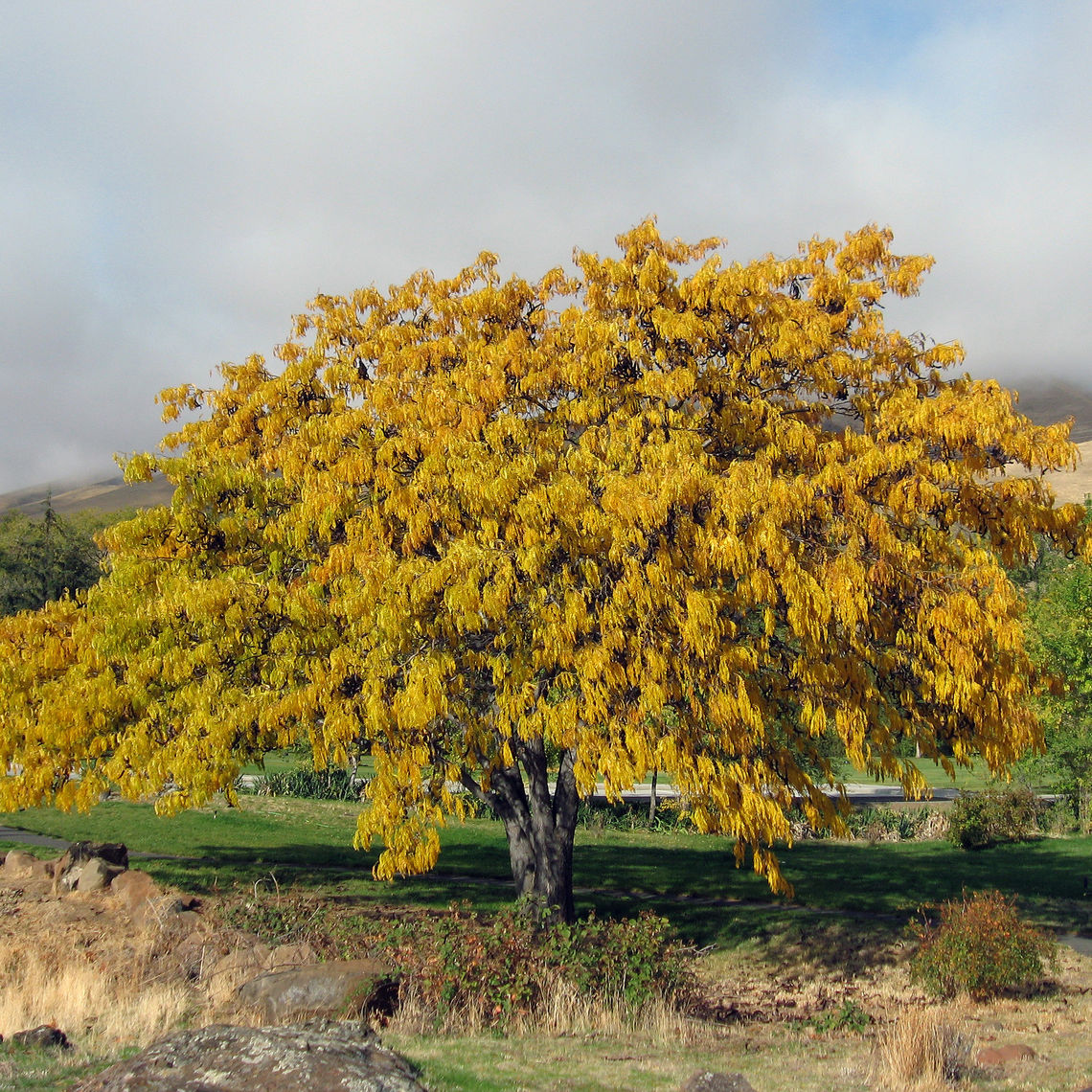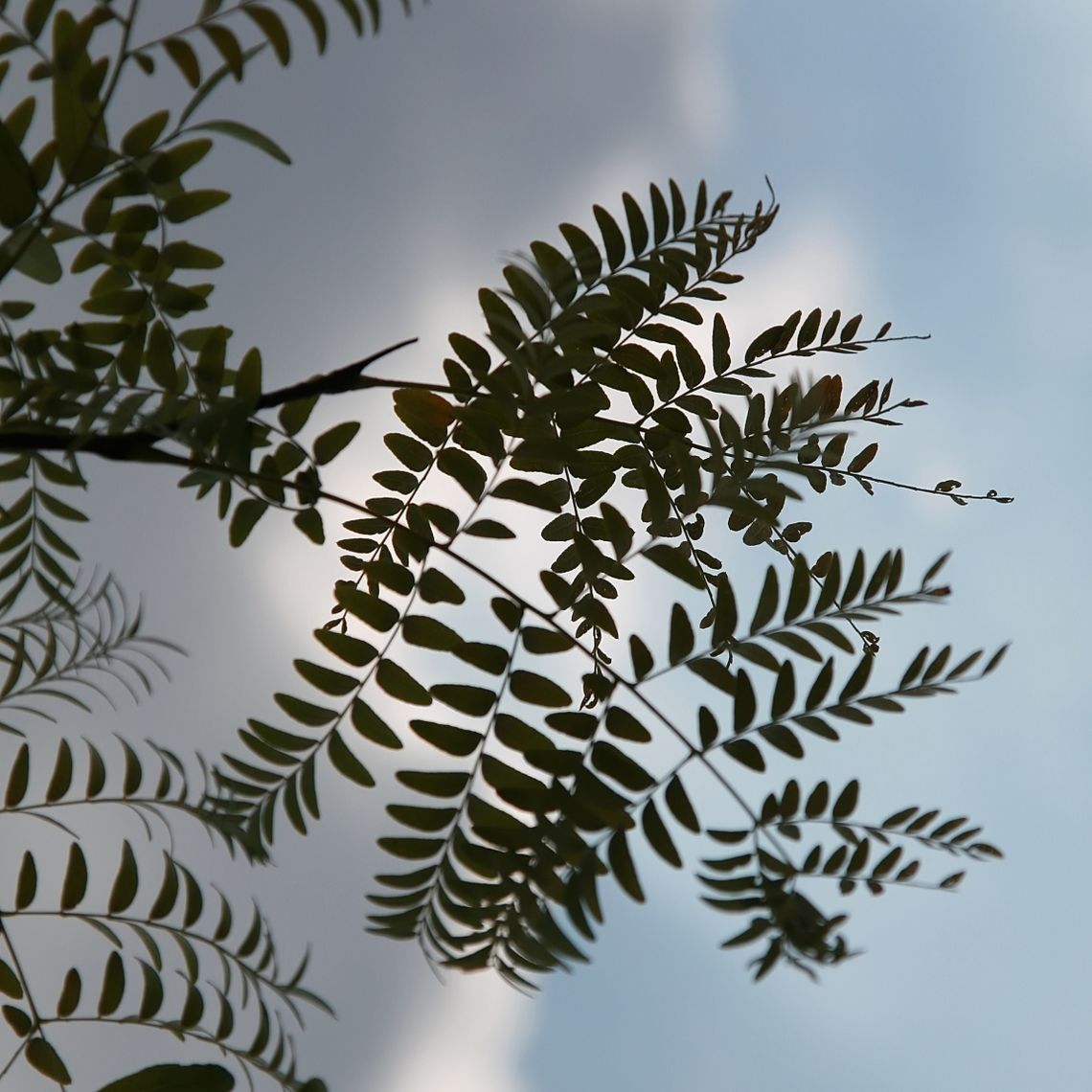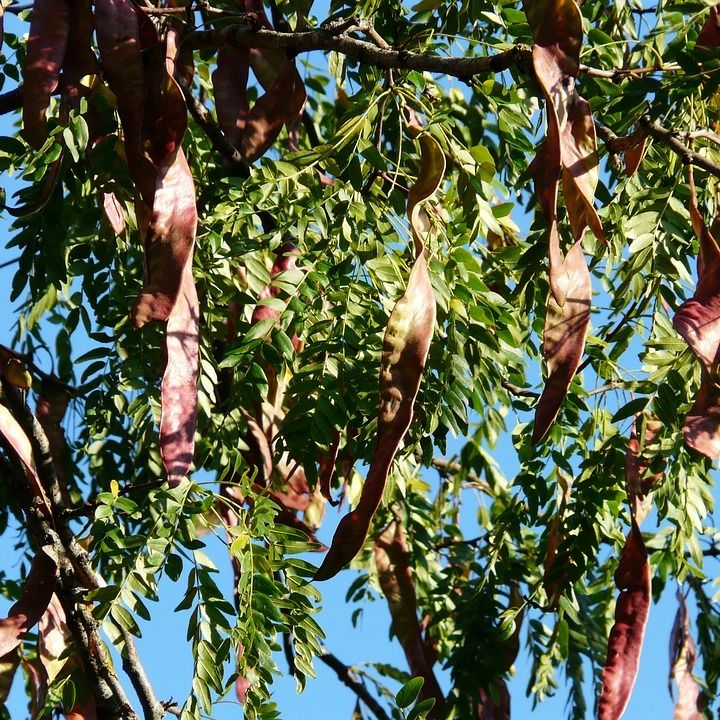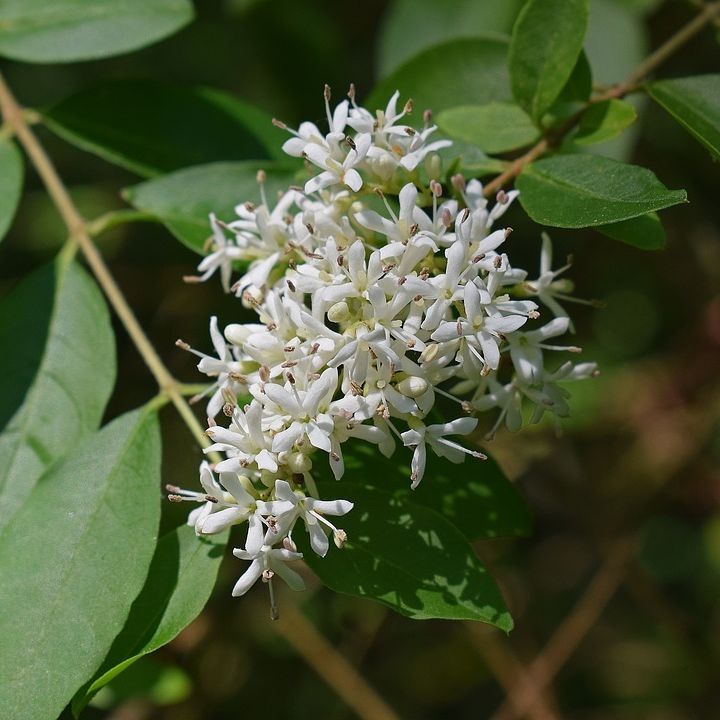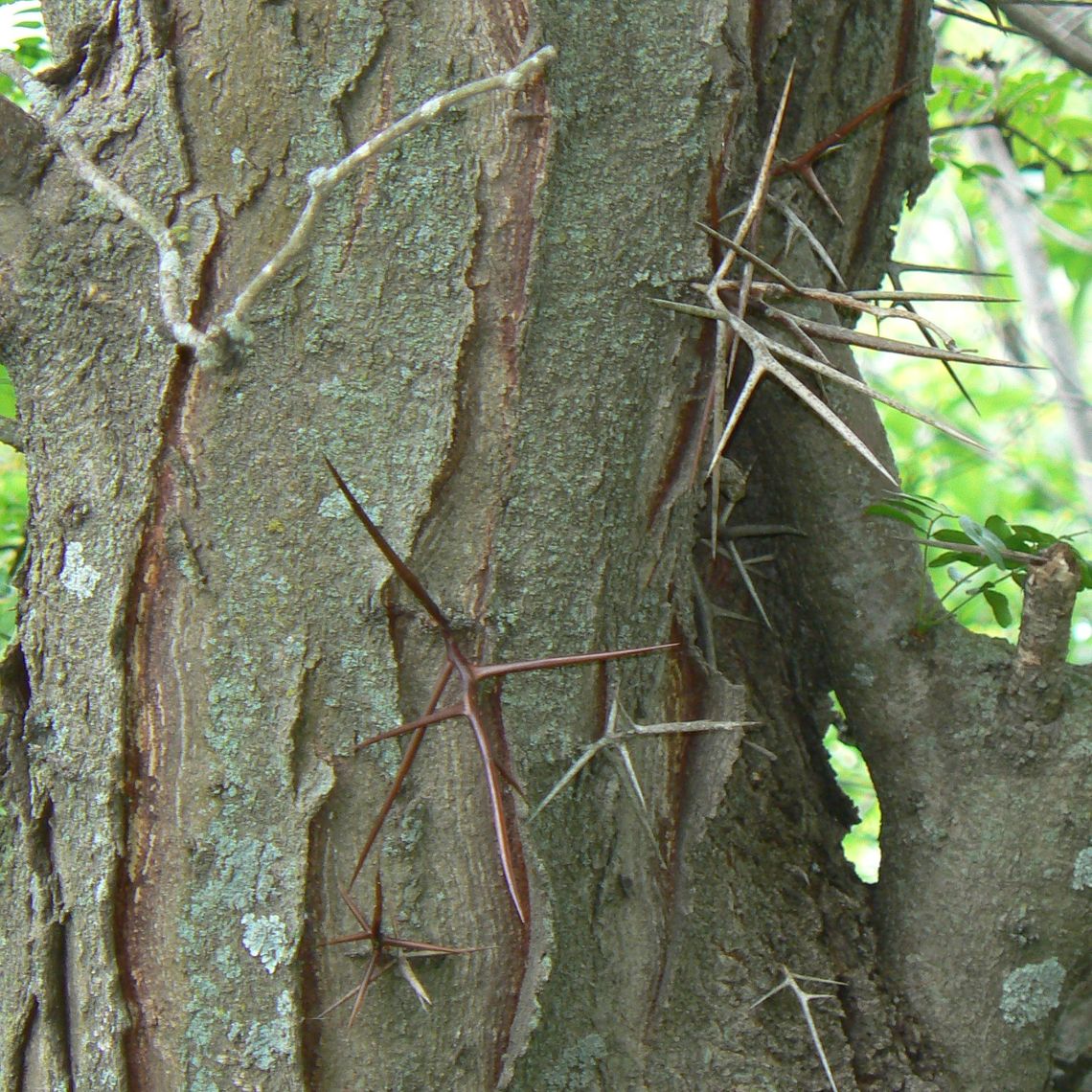Common Honey Locust (Gleditsia triacanthos)
The honey locust is most noted for its very long, curly, and dark purple-brown seed pods that emerge in late summer and last well into the winter. These pods contain seeds as well as a sweet gummy substance, which is where the tree's common name comes from. This species has 3-inch spikes that cover the tree's trunk and branches. Its leaves are composed of many small oval shaped leaflets. This tree attracts birds.
Family: Fabaceae (Pea)
Characteristics: The leaves are pinnately compound (leaflets attached in pairs along stem) with small, green, oval shaped leaflets. In the fall, leaves turn yellow. Green-yellow or green-white flowers appear in late spring, though are not noticeable. These flowers are followed by long, twisted, dark purple-brown seed pods that can grow up to 18 inches long. They mature in late summer and usually persist well into winter. These pods contain seeds as well as a sweet gummy substance. Bark is gray-brown and becomes broken up into long strips with age. The trunk and branches are covered in 3 inch long thorns. This tree has a rounded spreading crown. It grows 30-80 feet high and wide.
Foliage: Deciduous (leaves lost seasonally)
Geographic Origin: Central and eastern North America (native)
Cultivation Notes: Requires medium maintenance. Does best in full sun. Prefers moist and well-drained soils, though is tolerant to a wide range of soil types. This tree is also tolerant to wind, high heat, drought, and saline conditions.
Number on Campus: 2
Sources: Dirr, Morton Arboretum, Missouri Botanical Garden

